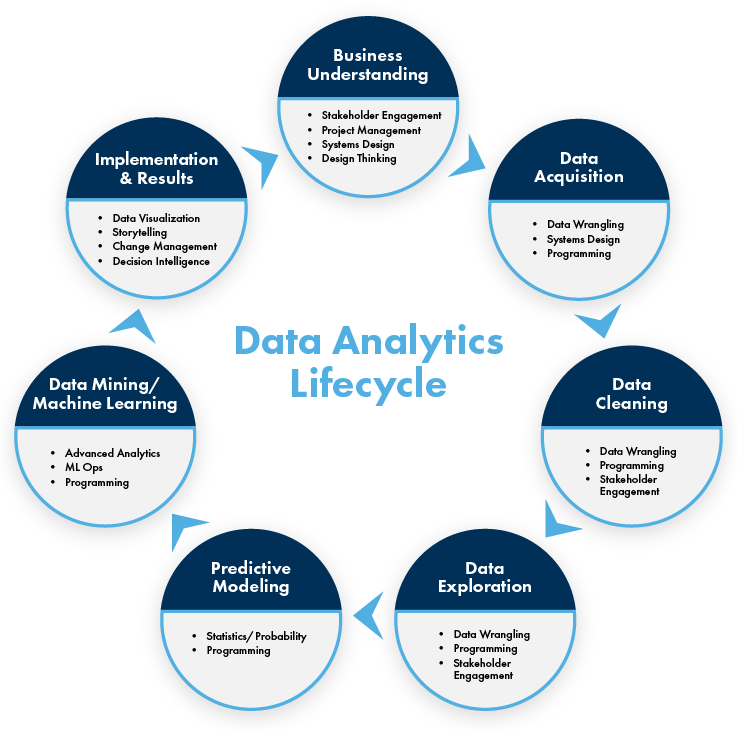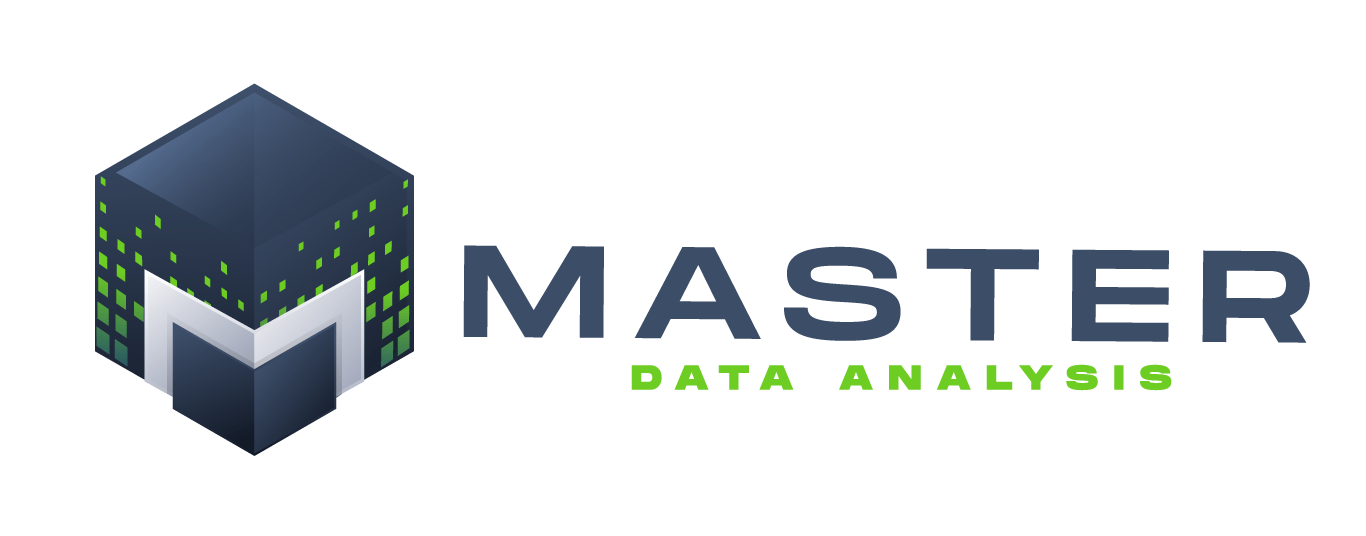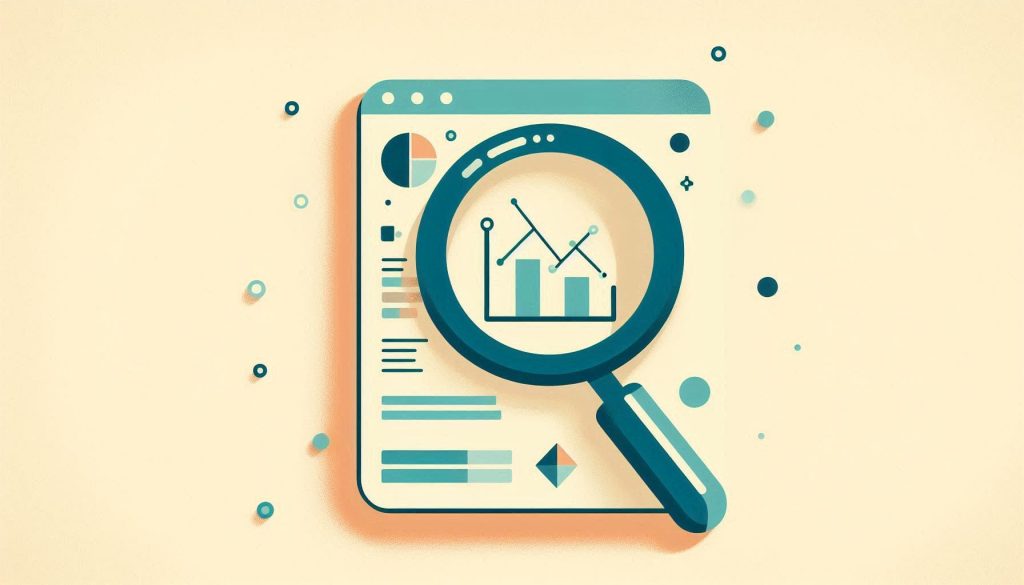Mastering data analysis involves understanding data types, applying statistical techniques, and interpreting results accurately. It requires both technical skills and analytical thinking.
Data analysis is a critical skill in today’s data-driven world. Businesses rely on it to make informed decisions, identify trends, and optimize processes. Analysts use various tools and techniques to clean, process, and interpret data. Proficiency in software like Excel, R, and Python is essential.
Knowledge of statistical methods ensures accurate insights. Mastery involves continuous learning and staying updated with the latest trends and technologies. Practical experience through projects and real-world applications enhances skills. Effective communication of findings is crucial for impact. Data analysis transforms raw data into valuable information, driving strategic success.

Credit: www.wgu.edu
Introduction To Data Analysis
Data analysis is the process of examining datasets. It helps businesses make informed decisions. Understanding data can reveal trends and insights. These insights guide strategies and operations. This introduction will explore the basics of data analysis.
Importance In Modern Business
Data analysis is crucial for modern businesses. Companies collect vast amounts of data daily. Analyzing this data can identify customer preferences. It helps in improving products and services. Better decisions lead to more success and growth.
Consider the following key benefits:
- Improved Decision Making: Data reveals trends and patterns.
- Cost Efficiency: Identifying waste and optimizing resources.
- Customer Insights: Understanding customer behavior and needs.
- Competitive Advantage: Staying ahead in the market.
Key Concepts
Several key concepts form the foundation of data analysis. These include:
| Concept | Description |
|---|---|
| Data Collection | Gathering information from various sources. |
| Data Cleaning | Removing errors and inconsistencies from data. |
| Data Transformation | Converting data into a usable format. |
| Data Visualization | Representing data using charts and graphs. |
These concepts are essential for effective data analysis. They help in extracting meaningful insights.
Data Collection involves methods like surveys and web scraping. Data Cleaning ensures accuracy and reliability. Data Transformation makes data analysis-ready. Finally, Data Visualization simplifies interpretation.

Credit: letsdatascience.com
Types Of Data
Mastering data analysis starts with understanding the types of data. Knowing the difference between structured and unstructured data is crucial. This knowledge helps in choosing the right techniques and tools for analysis.
Structured Data
Structured data is organized and easy to search. It is stored in a predefined format.
| Example | Description |
|---|---|
| Spreadsheets | Data in rows and columns |
| Databases | Tables with defined fields |
This type of data is ideal for relational databases. Examples include SQL databases and Excel files. Structured data is great for quick searches and simple queries.
Unstructured Data
Unstructured data lacks a predefined format. It is more challenging to analyze.
- Text documents
- Emails
- Videos
- Social media posts
This type of data requires advanced tools for analysis. Techniques like natural language processing and machine learning are often used.
Unstructured data is rich in information. However, it requires more effort to extract meaningful insights.
Data Collection Methods
Collecting data is a crucial step in data analysis. Choosing the right method helps gather accurate information. Let’s explore two effective data collection methods: Surveys and Questionnaires, and Web Scraping.
Surveys And Questionnaires
Surveys and questionnaires are popular data collection tools. They help gather opinions, preferences, and feedback from people.
Advantages:
- Easy to distribute
- Cost-effective
- Can reach a large audience
Disadvantages:
- Response bias
- Low response rates
- Misinterpretation of questions
Designing effective surveys requires clear and concise questions. Use a mix of open-ended and close-ended questions.
Web Scraping
Web scraping is a method to extract data from websites. It involves using software to collect and parse data automatically.
Advantages:
- Access to vast amounts of data
- Automates the data collection process
- Can gather data in real-time
Disadvantages:
- Legal and ethical concerns
- Requires technical skills
- Potential for data inaccuracy
Web scraping tools include Beautiful Soup, Scrapy, and Selenium. Ensure compliance with website terms of service.

Credit: www.masterdataanalysis.com
Data Cleaning Techniques
Mastering data analysis requires clean data. Dirty data can lead to wrong results. Data cleaning is the process of fixing or removing incorrect data. It involves several techniques to ensure data is accurate and reliable.
Handling Missing Data
Missing data is common in datasets. It can occur due to various reasons. Handling missing data is crucial for accurate analysis. Here are some techniques:
- Deletion: Remove rows with missing values. This method is simple. Use it when the missing values are few.
- Imputation: Fill missing values with mean, median, or mode. This keeps the dataset size intact.
- Prediction: Use algorithms to predict missing values. This is useful for complex datasets.
Choose the method based on your data needs. Always ensure the method improves data quality.
Removing Duplicates
Duplicate data can skew analysis results. Removing duplicates ensures data accuracy. Here are steps to remove duplicates:
- Identify duplicates: Check for repeated rows in your dataset.
- Remove duplicates: Use data tools to delete repeated rows.
- Verify: Ensure all duplicates are removed. Check for any remaining issues.
Removing duplicates is essential for reliable data analysis. Always verify your data after cleaning. Clean data leads to better insights and decisions.
Exploratory Data Analysis
Exploratory Data Analysis (EDA) is a key step in the data analysis process. It helps to uncover patterns, spot anomalies, and test hypotheses. By performing EDA, you can better understand your data, leading to more effective insights and decisions.
Descriptive Statistics
Descriptive statistics provide a quick summary of the data. They help in understanding the basic features of the data. Common descriptive statistics include:
- Mean: The average value.
- Median: The middle value when data is ordered.
- Mode: The most frequent value.
- Standard Deviation: Measures data spread.
These statistics give insights into the data’s central tendency and variability.
Data Visualization
Data visualization turns complex data into visual formats. It helps in quickly spotting trends and patterns. Common visualization techniques include:
- Histograms: Show the distribution of data.
- Box Plots: Display the spread and outliers.
- Scatter Plots: Illustrate relationships between variables.
- Bar Charts: Compare different groups.
Using these tools, you can make data-driven decisions with confidence.
Below is a table summarizing some key visualization tools:
| Tool | Purpose |
|---|---|
| Histogram | Show data distribution |
| Box Plot | Display spread and outliers |
| Scatter Plot | Illustrate variable relationships |
| Bar Chart | Compare groups |
Mastering these techniques can enhance your data analysis skills significantly.
Advanced Analysis Techniques
Data analysis is more than just crunching numbers. It involves using advanced techniques to uncover insights. These methods help in understanding complex data patterns.
Predictive Modeling
Predictive modeling is a crucial technique in data analysis. It helps in predicting future trends based on historical data. This method uses statistical algorithms and machine learning techniques. By analyzing past data, we can make accurate forecasts.
Here are some key benefits of predictive modeling:
- Improved decision-making
- Enhanced operational efficiency
- Risk reduction
Businesses use predictive modeling to stay ahead in the competition. It is a powerful tool for strategic planning.
Machine Learning
Machine learning is transforming data analysis. It allows systems to learn from data and improve over time. This technique uses algorithms that can identify patterns and make decisions.
Common machine learning algorithms include:
- Linear Regression
- Decision Trees
- Neural Networks
Machine learning can handle large datasets efficiently. It is ideal for tasks that require precision and speed.
Here is a simple table to compare traditional and machine learning techniques:
| Aspect | Traditional Techniques | Machine Learning |
|---|---|---|
| Data Handling | Manual | Automated |
| Accuracy | Moderate | High |
| Scalability | Limited | Extensive |
By using machine learning, data analysts can achieve more accurate results. It also helps in automating repetitive tasks.
These advanced analysis techniques are essential for mastering data analysis. They provide deeper insights and improve decision-making capabilities.
Tools And Software
Mastering data analysis requires the right tools and software. These tools help you process, visualize, and interpret data effectively. Below, we explore some of the most popular tools used by data analysts.
R And Python
R and Python are powerful programming languages. They are widely used for data analysis. R is great for statistical analysis. Python is versatile and easy to learn. Both have extensive libraries and packages.
- R: Ideal for statistical computing and graphics. Popular packages include ggplot2 and dplyr.
- Python: Known for its readability and simplicity. Key libraries include pandas, NumPy, and matplotlib.
Choosing between R and Python depends on your specific needs. Both are excellent for data manipulation and visualization.
Excel And Tableau
Excel and Tableau are user-friendly tools. They help in data visualization and analysis. Excel is widely known and used in many industries. Tableau offers advanced visualization capabilities.
| Tool | Strength | Best Use |
|---|---|---|
| Excel | Spreadsheet and basic visualization | Quick data analysis and simple charts |
| Tableau | Advanced data visualization | Interactive dashboards and detailed reports |
Excel is great for quick analysis. Tableau excels in creating interactive and detailed visualizations.
Interpreting Results
Interpreting results is a critical step in data analysis. It involves understanding the patterns and insights from the data. This process helps to make informed decisions. Let’s delve into how to draw conclusions and make data-driven decisions.
Drawing Conclusions
Drawing conclusions involves analyzing the data thoroughly. Start by looking at key metrics and identifying trends. Use graphs and charts to visualize the data. This helps in understanding the data better.
- Identify Patterns: Look for recurring patterns in the data.
- Compare Metrics: Compare different metrics to find correlations.
- Use Visual Aids: Charts and graphs make data easier to understand.
Consider the context of the data. This ensures your conclusions are relevant. Use statistical methods to validate your findings. This step helps in ensuring accuracy.
Making Data-driven Decisions
Making data-driven decisions involves using the insights from your data. Implement these insights to improve processes or strategies. This leads to better outcomes.
- Set Clear Goals: Define what you want to achieve.
- Analyze Alternatives: Look at different options based on your data.
- Implement Changes: Apply the best option and monitor results.
Monitor the impact of your decisions. Adjust your strategy based on new data. This ensures continuous improvement. Always rely on data for making important decisions.
Case Studies
Case studies provide real-world examples of mastering data analysis. They showcase practical applications and tangible results. By examining these examples, we can learn valuable insights. Let’s dive into some successful implementations and lessons learned.
Successful Implementations
Successful data analysis requires a structured approach. Here are some standout examples:
- Retail Sector: A major retailer used data analysis to optimize inventory. Sales increased by 20% due to better stock management.
- Healthcare: Hospitals utilized data to predict patient admissions. This improved resource allocation and reduced wait times by 30%.
- Finance: Banks implemented fraud detection algorithms. This resulted in a 40% reduction in fraudulent transactions.
These examples highlight the power of data analysis. Each implementation led to significant improvements.
Lessons Learned
From these case studies, we gain important lessons:
- Data Quality: Ensure data is accurate and up-to-date. Poor data quality leads to faulty analysis.
- Team Collaboration: Involve all stakeholders in the process. Collaboration enhances insights and implementation.
- Continuous Improvement: Regularly review and refine analysis methods. This ensures ongoing relevance and accuracy.
These lessons underscore key principles for successful data analysis. They provide a roadmap for future projects.
| Sector | Implementation | Result |
|---|---|---|
| Retail | Inventory Optimization | 20% Sales Increase |
| Healthcare | Patient Admission Prediction | 30% Reduction in Wait Times |
| Finance | Fraud Detection | 40% Reduction in Fraud |
Future Trends In Data Analysis
The world of data analysis is evolving rapidly. New trends are shaping the future. Understanding these trends is crucial for staying ahead.
Ai Integration
Artificial Intelligence (AI) is transforming data analysis. AI helps in making faster decisions.
AI can automate repetitive tasks. This saves time and reduces human error.
Some key benefits of AI in data analysis are:
- Enhanced data processing speed
- Improved accuracy
- Predictive analytics
AI algorithms can analyze vast amounts of data. They can identify patterns that humans might miss. This leads to better insights.
Real-time Analytics
Real-time analytics is another game-changer. It allows businesses to make decisions on the fly.
With real-time data, companies can respond to market changes instantly. This provides a competitive edge.
Here are some advantages of real-time analytics:
- Immediate insights
- Enhanced customer experience
- Better risk management
Real-time analytics is essential for industries like finance, healthcare, and retail. These sectors benefit from instant data-driven decisions.
Future trends in data analysis will continue to evolve. Staying updated with these trends is vital for success.
Frequently Asked Questions
What Is Data Analysis In Simple Terms?
Data analysis is the process of examining, cleaning, and modeling data. It helps extract useful information, make informed decisions, and identify patterns.
Why Is Data Analysis Important?
Data analysis is crucial for informed decision-making. It helps organizations understand trends, improve operations, and enhance customer experiences.
What Tools Are Used For Data Analysis?
Common tools include Excel, SQL, Python, R, and data visualization software like Tableau. Each tool serves different analysis needs.
How Does Data Analysis Improve Business?
Data analysis provides insights into customer behavior, market trends, and operational efficiency. This helps businesses make strategic decisions and drive growth.
Conclusion
Mastering data analysis unlocks valuable insights and drives informed decisions. Stay curious, practice regularly, and use the right tools. This journey enhances your skills and career prospects. Embrace challenges, learn continuously, and keep evolving. Remember, the power of data lies in your hands.
Start analyzing today and watch your expertise grow.


